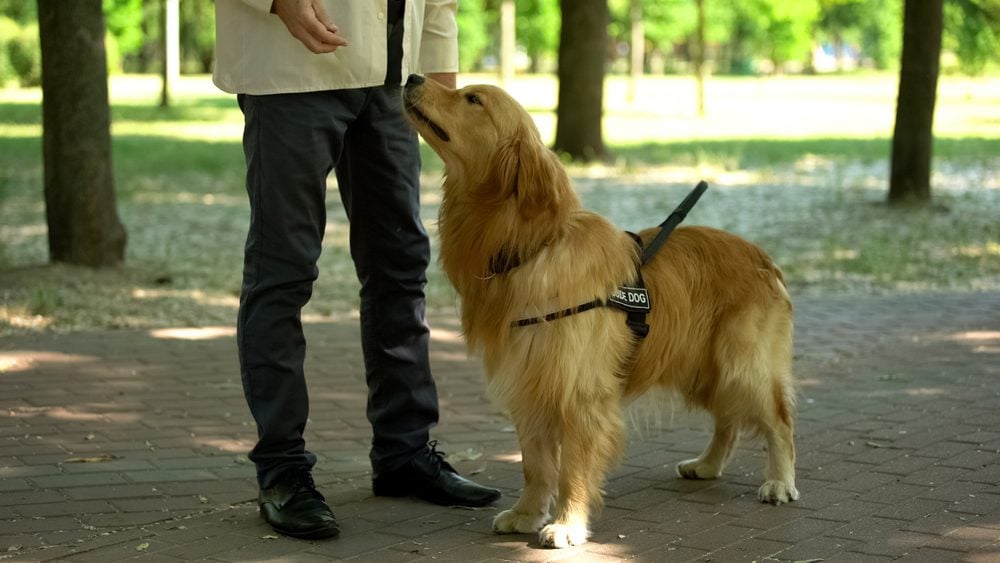Training your own autism service dog can be a rewarding and beneficial experience for both you and your child. By following proper guidelines and seeking professional advice, you can successfully train your service dog to provide support and companionship to your loved one with autism.
Building a strong bond and understanding the specific needs of your child are essential steps in this process. Additionally, patience, consistency, and positive reinforcement play key roles in shaping your dog’s behavior and responses to your child’s unique requirements. With dedication and commitment, you can create a strong partnership between your child and their service dog, enhancing their quality of life.
Introduction To Autism Service Dogs
|
Autism service dogs provide various benefits for individuals with autism. These dogs can offer companionship and emotional support, helping to reduce anxiety and improve overall well-being. Additionally, they can assist with developing social skills and increasing independence. Furthermore, autism service dogs are trained to perform specific tasks tailored to the individual’s needs. These tasks may include interrupting repetitive behaviors, providing deep pressure therapy during sensory overload, and ensuring safety by preventing elopement. Moreover, these dogs can also help with transitioning between activities and managing sensory sensitivities. When it comes to responsibilities, training an autism service dog involves a collaborative effort between the individual, their family, and a professional trainer. This training process focuses on developing a strong bond, effective communication, and the necessary skills for the dog to fulfill its role effectively. |
Selecting The Right Breed
Training your own autism service dog begins with selecting the right breed. When choosing a breed, it is important to consider key traits that make for good service dogs. Some popular breeds for autism support include Golden Retrievers, Labrador Retrievers, and Standard Poodles. These breeds are known for their intelligence, trainability, and gentle nature. They have the ability to form strong bonds with their handlers and provide the necessary emotional support. Additionally, they are usually patient and calm, which is important in assisting individuals with autism. These breeds also tend to be good with children and other animals, making them suitable for families. By selecting the right breed, you can set a solid foundation for training your own autism service dog.
Fundamentals Of Puppy Training
Training your own autism service dog is an important process that requires a strong foundation in puppy training. Socialization techniques play a crucial role in shaping your dog’s behavior and preparing them for their future role. Introducing your puppy to different environments, people, and animals from an early age helps them develop confidence and adaptability.
Basic obedience skills are also essential for a well-trained autism service dog. Teaching your puppy commands such as sit, stay, and come not only establishes a level of control but also builds a bond of trust between you and your dog. Consistency and positive reinforcement are key in reinforcing these skills.

Credit: www.deltatails.com
Advanced Service Dog Training
|
Teach your dog specific tasks for autism assistance. Ensure your dog is ready for public access. |
Behavioral Adjustment And Management
Behavioral adjustment and management are crucial when training an autism service dog. Dealing with anxiety is one of the key aspects of training. The dog should be trained to recognize the signs of anxiety in their owner and respond accordingly. This can include providing deep pressure therapy or simply laying their head on the person’s lap.
Mitigating overstimulation is also an important part of the training process. The dog should be taught to recognize when their owner is becoming overwhelmed and provide a calming presence. This can include removing the person from the overstimulating environment or providing tactile stimulation to redirect their attention.
Legal Considerations And Certifications
Understanding service dog laws is crucial when training your own autistic service dog. It’s important to be aware of the legal considerations and certifications required for the process. The certification process for a service dog involves several steps and specific training. It’s essential to follow the guidelines and regulations set by the authorities to ensure the legitimacy of your autism service dog. By understanding the legal aspects and certification process, you can navigate the training journey effectively and ensure that your service dog meets all the necessary requirements.
Daily Routines And Dog Care
Developing a daily routine is crucial when training your own autism service dog. Consistency is key, as is providing proper care and attention. By establishing a structured routine, you can help your dog learn and thrive in their role as a service animal.
| Exercise and Nutrition | Ensure regular walks and balanced meals for your service dog. |
| Health Check-Ups and Grooming | Take your dog for vet visits and brush its coat often. |
Integrating Your Service Dog Into Your Life
Training your own autism service dog involves integrating the dog into your life. Navigating social situations and maintaining training consistency are key aspects. It’s important to ensure the dog is comfortable in various settings and can perform tasks reliably. Reward-based training methods can be effective in reinforcing desired behaviors. Consistency in training routines helps the dog understand expectations and respond appropriately. Socializing the dog regularly helps in developing positive interactions with people. Building a strong bond with the dog is essential for effective communication and teamwork.
Success Stories And Testimonials
Training your own autism service dog can have a real-life impact. Many individuals have shared their success stories and testimonials about the lessons learned.

Credit: usserviceanimals.org
Frequently Asked Questions
Can You Train A Dog To Help With Autism?
Yes, dogs can be trained to help individuals with autism by providing emotional support and assistance.
How Long Does It Take To Train An Autism Service Dog?
Training an autism service dog typically takes around 1 to 2 years. The duration may vary based on the specific needs of the individual and the dog’s progress.
Can You Train Your Dog To Be A Service Dog Yourself?
Yes, you can train your dog to be a service dog yourself. It requires time, patience, and consistency. Start with basic obedience training and gradually introduce specialized tasks. Seek guidance from professional trainers and follow legal requirements to ensure your dog meets the necessary standards for service dog certification.
Can A High Functioning Autistic Person Get A Service Dog?
Yes, a high-functioning autistic person can get a service dog for support and assistance.
Conclusion
Training your own autism service dog can be a life-changing experience for both you and your furry companion. With the right guidance and resources, anyone can successfully train their dog to provide assistance and support to those with autism. By investing time, patience, and effort into the training process, you can create a strong bond with your dog and improve your quality of life.
Remember, every dog is unique, so tailor your training approach to fit your individual needs and those of your dog. With dedication and commitment, you can create a loyal and reliable service dog that will enhance your daily routines and provide comfort and companionship.

Hello, I’m Ethan Mitchell. My passion is dog training and behavior enthusiasts. With years of experience working with various breeds, my goal at Dog Advisor Pro is to help dog owners build strong, loving relationships with their furry friends through effective training techniques. Understanding a dog’s behavior is the key to harmonious companionship. I am dedicated to sharing practical training tips that improve the lives of dogs and their owners.


